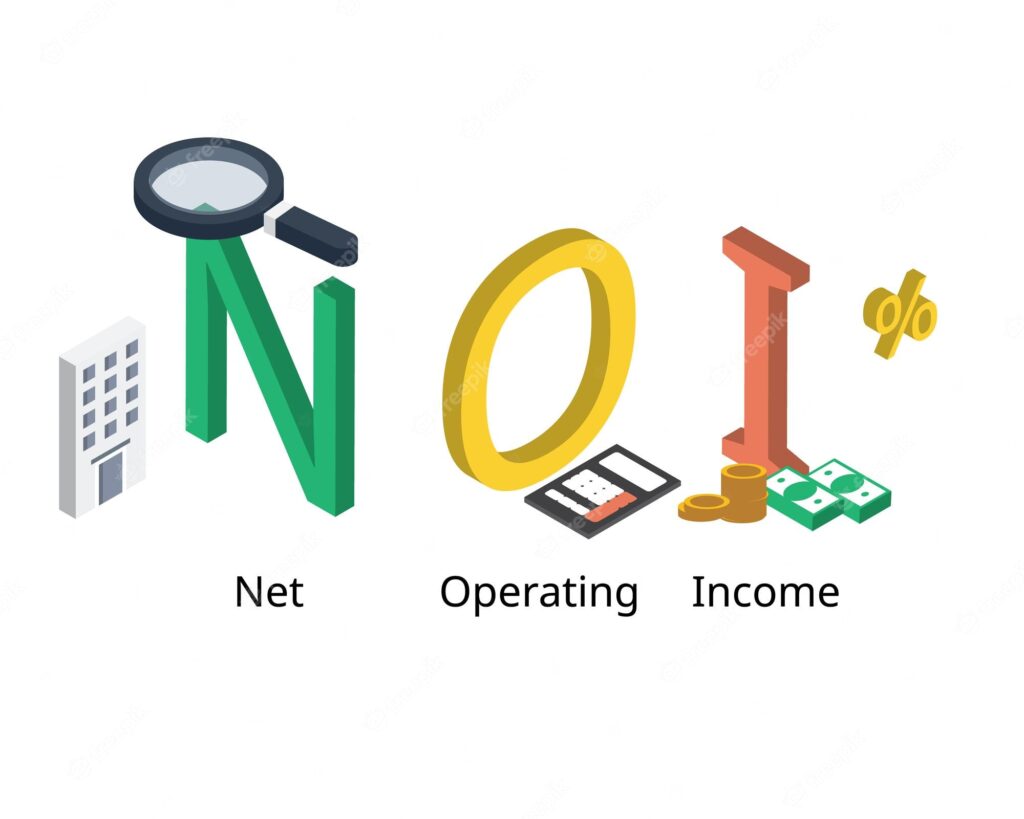Estimating Net Operating Income (NOI) for Investment Properties: A Comprehensive Guide
Estimating Net Operating Income (NOI) for Investment Properties: A Comprehensive Guide

Estimating Net Operating Income (NOI) for Investment Properties: A Comprehensive Guide
Estimating Net Operating Income (NOI) for Investment Properties: A Comprehensive Guide
Net operating income is a valuation method used to measure the profitability of a real estate property based on its revenue and expenses. It is calculated by subtracting all operating expenses incurred by the property from the revenue it generates. The resulting figure represents the net income generated by the property, excluding certain costs such as loan payments, capital expenditures, depreciation, amortization, and taxes.
The Importance of Net Operating Income (NOI) in Investment Decision Making
Net operating income is a critical metric that helps real estate investors assess the income potential of a property and evaluate its value. By analyzing the NOI, investors can determine the returns they can expect from owning and operating the property. Moreover, it also factors into the debt coverage ratio (DCR), which provides insights into whether the revenue generated by the property will be sufficient to cover debt and operating expenses.
Calculating Net Operating Income (NOI)
The formula for calculating net operating income is relatively simple:
Net Operating Income = Revenue – Operating Expenses
To illustrate this calculation, let’s consider an example. Imagine an investor is interested in purchasing a multifamily building. The property generates revenue from various sources, such as rental income, parking fees, and laundry machines. On the expense side, there are costs associated with property management fees, property taxes, repair and maintenance, and insurance.
Let’s assume the annual revenue from rental income is $5,000,000, parking fees amount to $250,000, and income from laundry machines is $50,000. The total revenue generated by the property would be $5,300,000.
On the expense side, property management fees are $500,000, property taxes amount to $500,000, repair and maintenance costs are $250,000, and insurance expenses total $250,000. The total operating expenses for the property would be $1,500,000.
By subtracting the operating expenses from the total revenue, we can calculate the net operating income:
$5,300,000 – $1,500,000 = $3,800,000
In this case, the net operating income of the property would be $3,800,000.
The Role of Net Operating Income (NOI) in Property Valuation
Net operating income is a valuable metric for property valuation, as it helps real estate investors determine the value of a property relative to market trends and risks. It serves as a comparative benchmark and provides a foundation for evaluating other metrics like capitalization rate (cap rate) and yield on cost. By considering NOI alongside other key deal metrics, investors can make informed decisions and assess the potential profitability of an investment opportunity.
Calculating the Capitalization Rate (Cap Rate) Based on Net Operating Income (NOI)
Investors often go beyond calculating net operating income and proceed to determine the capitalization rate (cap rate) of a property. The cap rate is a metric used to estimate the rate of return on an investment property. To calculate the cap rate, divide the net operating income by the current property value.
For instance, let’s assume the net operating income of a property is $1,500,000, and its current value is $13,500,000. By dividing the NOI by the property value, we can calculate the cap rate:
$1,500,000 / $13,500,000 = 0.111 (or 11.1%)
In this example, the cap rate would be 11.1%.
Analyzing Net Operating Income (NOI) in Commercial Real Estate Investing
When evaluating investment opportunities in commercial real estate, investors often analyze the net operating income of different deals to compare their profitability. Let’s consider three hypothetical deals and examine their respective net operating incomes, total revenue, total operating expenses, purchase prices, and cap rates.
DealTotal RevenueTotal Operating ExpensesNet Operating IncomePurchase PriceCap Rate
In this scenario, Deal #3 has the highest net operating income of $1,100,000. However, it also carries a higher cap rate of 10%, indicating a potentially higher level of risk. Deal #2, on the other hand, has the lowest cap rate of 7.5%, suggesting a more stable revenue stream. Deal #1 falls in between, with a cap rate of 8.5%.
Ultimately, the choice of investment will depend on the risk profile and investment strategy of the investor.
Integrating Net Operating Income Analysis into Investment Decision Making
To make informed investment decisions, it is essential to consider net operating income alongside other key deal metrics. By centralizing relevant information and using historical data, investors can gain clear visibility into the potential profitability of an investment. Implementing a comprehensive deal management solution, such as real estate tech, can streamline data-driven decision making and enhance the efficiency of the investment process.
Conclusion
Net operating income (NOI) is a crucial metric used by real estate investors to assess the profitability of investment properties. By calculating NOI, investors can understand the income potential of a property and evaluate its value relative to market trends and risks. Additionally, NOI serves as the foundation for analyzing other metrics like the capitalization rate (cap rate) and helps investors make informed investment decisions. By integrating net operating income analysis into investment decision-making processes, investors can enhance their understanding of potential returns and mitigate risks.
For more in-depth insights into the role of technology in real estate investment, download our white paper, . Real Estate’s Tech Boom: Why It’s Time for a Deal Management Solution
Keywords:
Primary Keyword: Net Operating Income (NOI) for Investment Properties
Secondary Keywords: real estate valuation, profitability, investment decision making, NOI formula, property valuation, capitalization rate (cap rate), commercial real estate investing, investment metrics, deal analysis, deal management solution
Tone of Voice:
Professional, informative, and authoritative.







